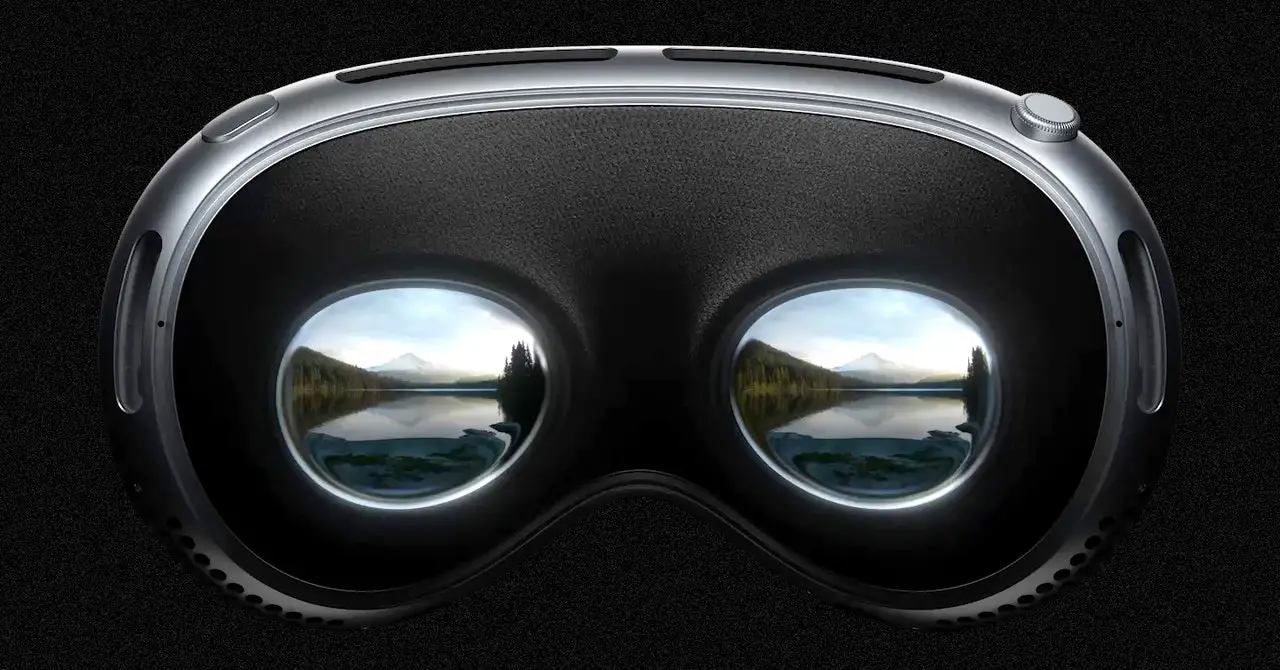
This has become a pattern: One minute he’s not wearing the headset, and the next he is. The transition would always happen unexpectedly—when I’d leave the room to jump in the shower, do my makeup in the bathroom, or get ready to go out.
One time, after I finished brushing my teeth before bed, I walked out to the living room to find him sitting on the edge of the couch, staring into the distance with the Vision Pro firmly on his head. He was playing chess. I sat down next to him and watched in silence as he pinched his fingers and moved imaginary chess pieces through the air in multiple directions—left, right, diagonal—slowly pulling back to observe his opponent’s (a computer) next move.
During similar interactions, I’d always ask, “Can I try?” In an attempt to persuade me to love the Vision Pro as much as he does, he’d always oblige. It’s not that I’m totally against owning my own headset, but I struggle to understand the need for it in its current form. Aside from the outrageous $3,500 price and heavy frame, I know that I’ll never reach for it as much as I do my iPhone, MacBook, or iPad. I’m content with my setup. Besides, shouldn’t that mean one per household is enough if you spend that much? Unfortunately, sharing the experience feels more like a hassle than fun.
For starters, you have to log in to Guest Mode each time, so I’m forced to go through the 90-second calibration test every time. I also wear glasses. Technically, I’m supposed to buy the prescription Zeiss Optical Inserts. But I refuse to give Apple $150 because of something completely out of my control. It’s also annoying to think that you’d have to spend even more money if you live in a household with multiple people wearing glasses.
I’ve also never had a problem using other headsets, like the Meta Quest 2, with glasses. And so, out of pure spite, I continue calibrating the Vision Pro with my glasses on anyway. It’s not foolproof—the internal eye-tracking cameras sometimes struggle to pinpoint where my eyes are looking. Some things, like spending time in virtual Mount Hood, watching Spiderman: No Way Home in 3D, and browsing the web on Safari, are easy. But anything that requires more precise eye-tracking, such as navigating visionOS or attempting to play a game, is a struggle.
A Problem Shared
When my boyfriend and I wanted to share the experience in any way, shape, or form, we’d try casting content on the TV using AirPlay. Unfortunately, a simple task like watching a movie wasn’t very successful. We tried watching Mean Girls, but because it’s on a streaming service, the content was blacked out on both the Vision Pro and the TV because of copyright.
Meanwhile, playing a game like Fruit Ninja on the big screen is fun for only so long. Every time we wanted to switch players, we’d have to go back and forth between his profile and Guest Mode. I couldn’t help but think back to how easy this process was with a headset like the Quest 2. A few years back, when my dad, brother, and I played The Walking Dead: Saints & Sinners for a few hours together, we simply passed the headset around between the three of us and jumped into the game without having to switch profiles or tinker with the settings. On the Vision Pro, however, my boyfriend and I must’ve played for a total of 10 minutes before the whole experience started to get boring.







